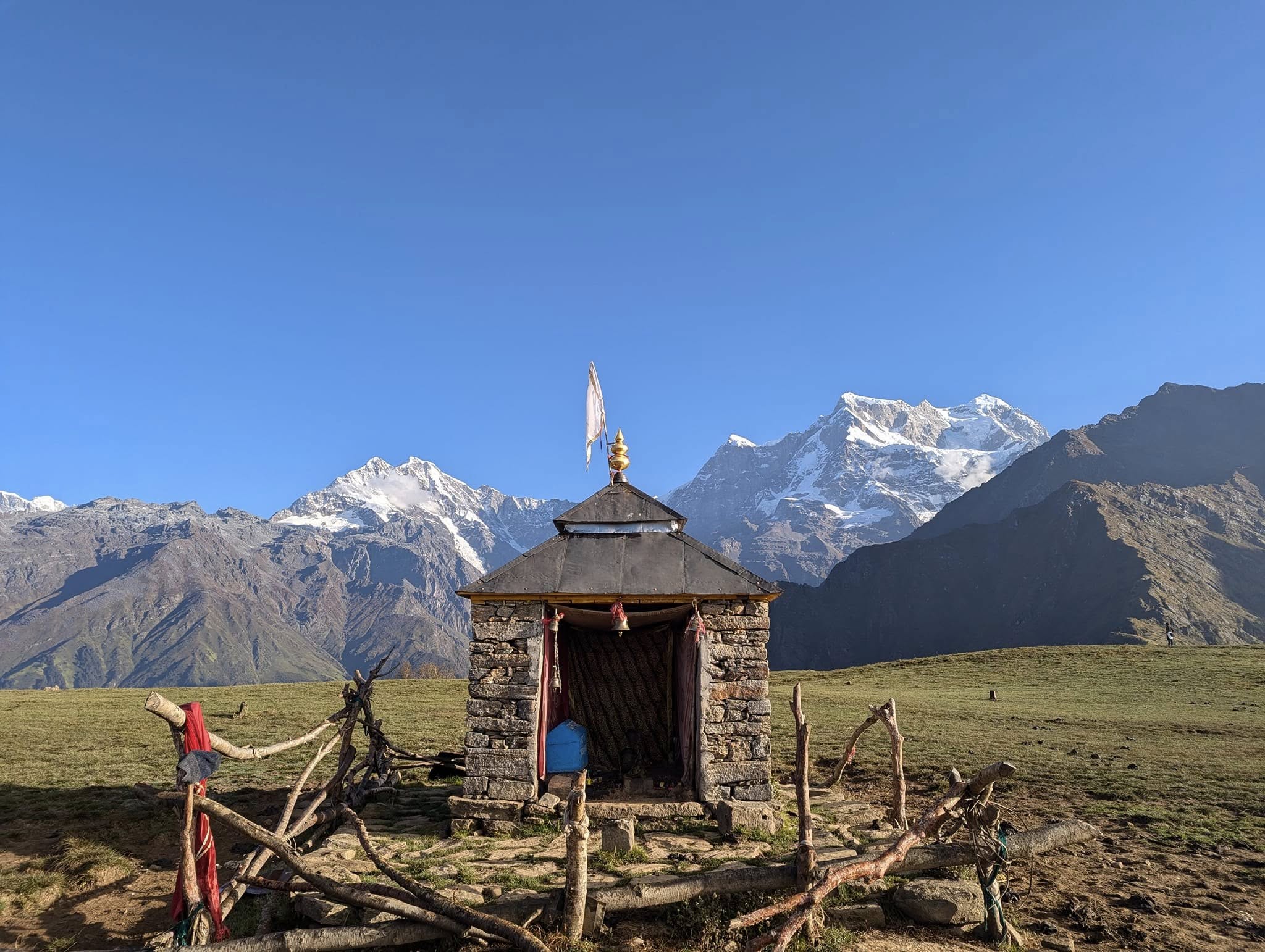Madhmaheshwar Tour Package: The Madhmaheshwar Temple (also spelled Madhyamaheshwar or Madmaheshwar), perched majestically at an altitude of approximately 3,497 meters (11,473 feet) in the picturesque Rudraprayag district of Uttarakhand, holds immense sanctity in Hindu tradition. It is revered as the second of the Panch Kedar the five sacred shrines dedicated to Lord Shiva in the Garhwal Himalayas.
The temple is unique not just for its breathtaking high-altitude setting but for the specific form of the deity worshipped here. Madhmaheshwar is believed to house the navel (Nabhi) portion of the bull form of Lord Shiva, a manifestation intrinsically linked to the history of the Mahabharata.
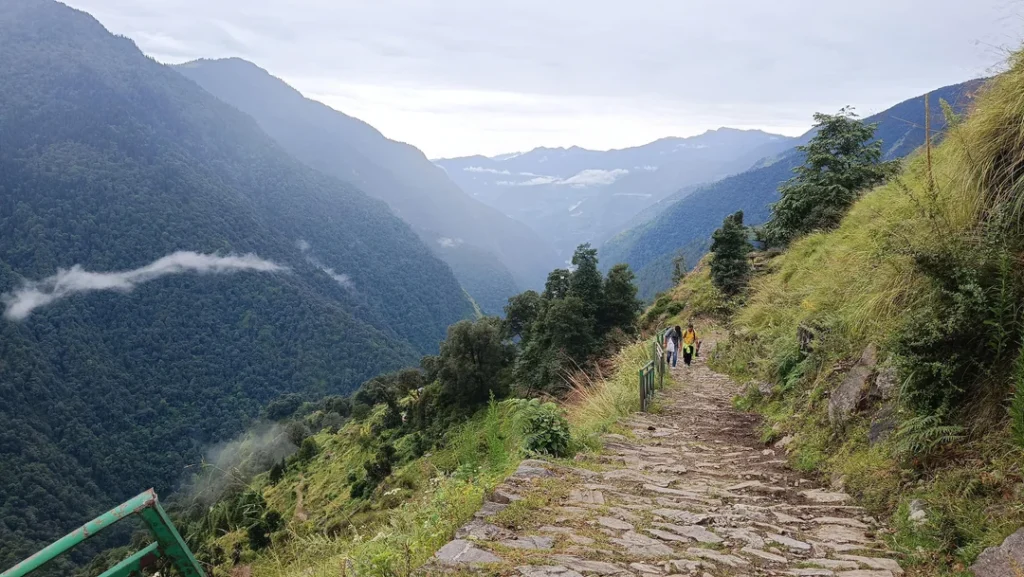
The Sacred Legend: Pandavas and the Buffalo
The origin of the Panch Kedar is deeply rooted in the epic Mahabharata. After the colossal battle of Kurukshetra, the victorious Pandava brothers were overwhelmed by the sin (Brahmahatya) of having killed their own kinsmen, cousins, and preceptors (Gurus). To seek expiation, they embarked on a pilgrimage to find Lord Shiva.
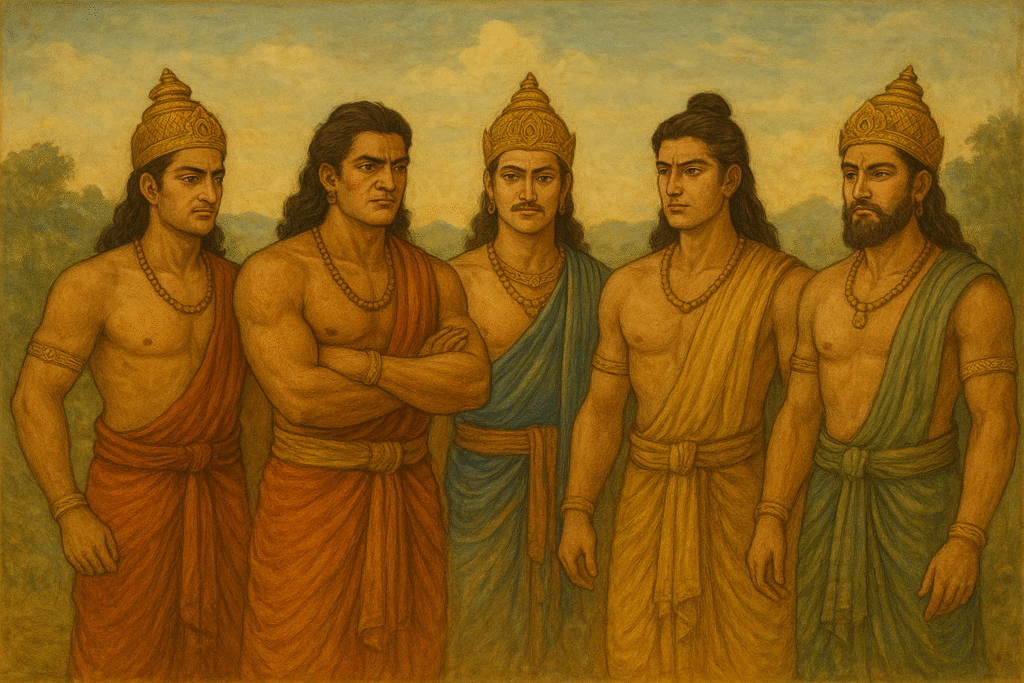
Lord Shiva, wishing to avoid them initially due to the severity of their sins, transformed himself into a large Buffalo (Bhens) and concealed himself in the Garhwal region. When the Pandavas, led by Bhima, recognized the divine bull, Shiva attempted to disappear into the ground. Bhima, with his immense strength, managed to grab the Buffalo hump and various parts of the Buffalo body resurfaced at five distinct locations, which became the Panch Kedar:
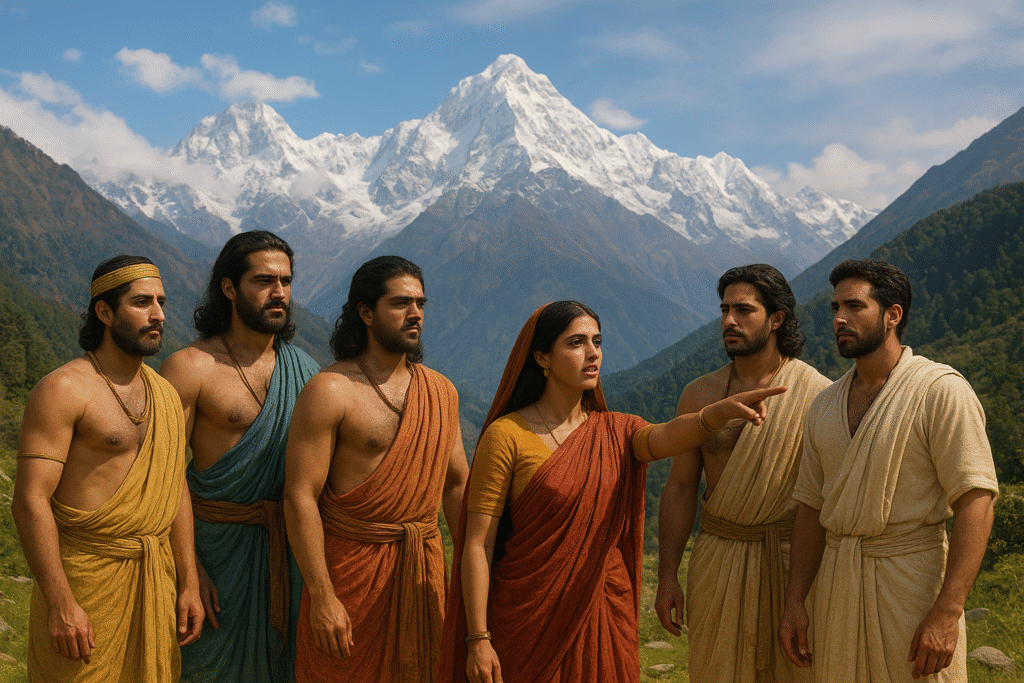
- Kedarnath: The Hump
- Madhmaheshwar (Second Kedar): The Navel (Nabhi)
- Tungnath (Third Kedar): The Arms (Bahu)
- Rudranath (Fourth Kedar): The Face (Mukha)
- Kalpeshwar (Fifth Kedar): The Hair (Jata)
The navel-shaped lingam at Madhmaheshwar is therefore a direct symbol of the bull’s vital energy and the center of its form, representing the spiritual center of creation and penance. It is believed that worship here grants the devotee not just forgiveness but also the attainment of the Madhyam or middle path spiritual balance and wisdom.
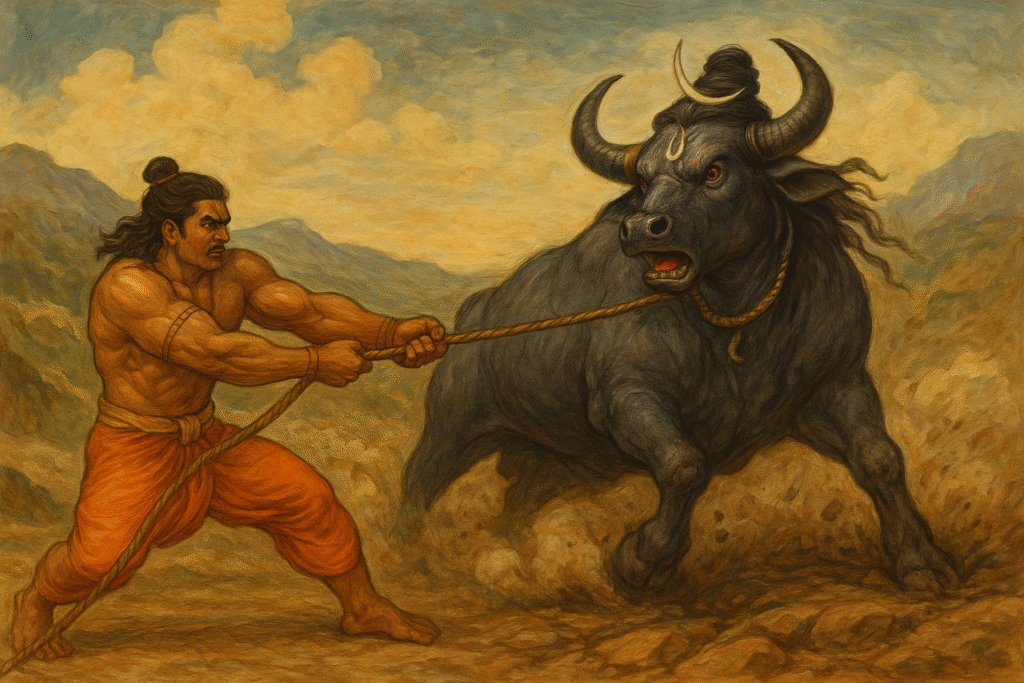
The Journey to Madhmaheshwar: A Comprehensive Guide
The pilgrimage to Madhmaheshwar is less a drive and more a deep immersion into the pristine heart of the Himalayas, requiring a moderate to difficult trek over several days.
Reaching the Base Camp (Ransi Village)
1. Delhi to Haridwar/Rishikesh/Dehradun (The Gateway)
- How to Reach: Take an overnight train (like the Mussoorie Express) or a comfortable Volvo bus from Delhi to Haridwar or Rishikesh.
- Time: Approx. 6 to 7 hours.
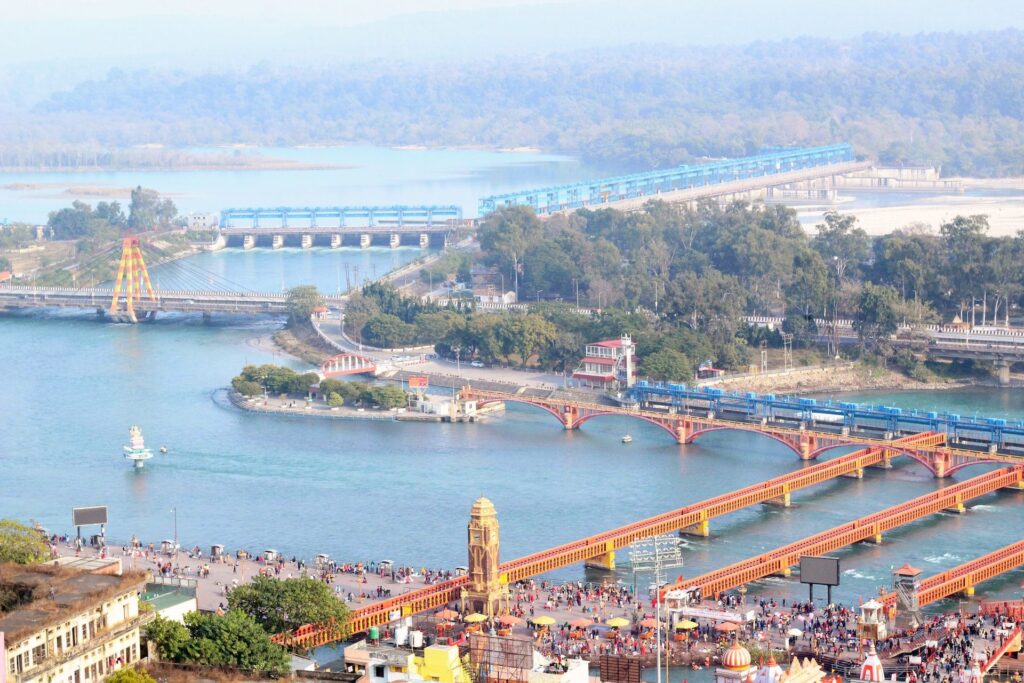
2. Rishikesh/Haridwar to Ukhimath (The District Hub)
- How to Reach: This is a long, mountainous drive. Book a private taxi or take a shared jeep (SUMO/Bolero) from Rishikesh.
- Route: The journey passes through Devprayag (the sacred confluence of the Bhagirathi and Alaknanda rivers), Rudraprayag, and Augustmuni.
- Time: Approx. 8 to 9 hours. Ukhimath is the ideal halt for the first night after leaving Rishikesh.
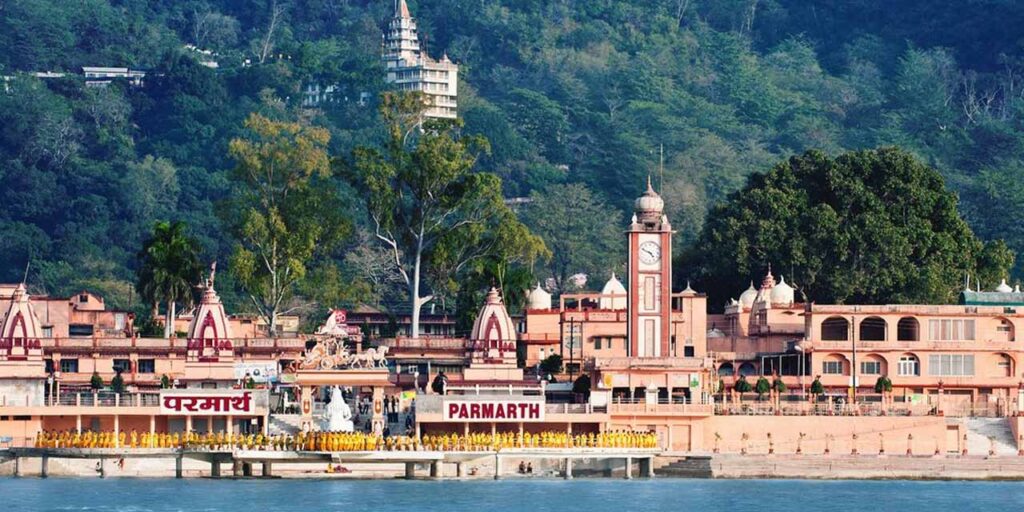
3. Ukhimath to Ransi Village (The Trek Starting Point)
- How to Reach: Ransi is approximately 25-30 km from Ukhimath. Hire a local taxi from Ukhimath. Ransi is the traditional and most convenient starting point for the trek.
- Accommodation in Ransi: Ransi is a small, quaint village and the last road head. Stay options here are simple, warm guesthouses and homestays. It is customary to spend the first night here for acclimatization and an early start.
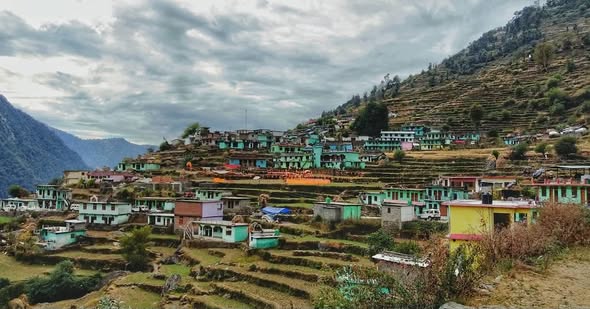
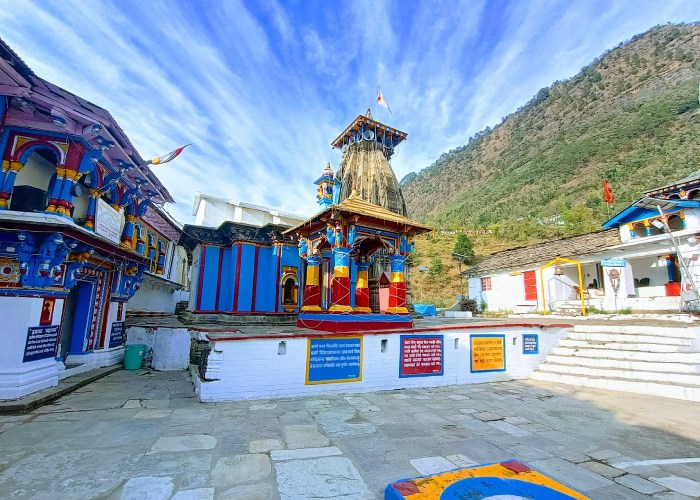
The Madhmaheshwar Trek (An Intimate Himalayan Experience)
The Madhmaheshwar trek is renowned for its pristine jungles, calm mountains, and exceptionally clean trails, often considered one of the most beautiful among the Panch Kedar routes. The forest canopy is dense, offering a cool respite, while the surrounding peaks provide a continuous spectacle.
Day 1: Ransi to Goundar/Bantoli
- Distance: Approx. 8 to 10 km
- Trek Details: The trail starts with a gradual descent from Ransi to the river valley. The path is well-marked and runs alongside the Madhmaheshwar Ganga.
- The Confluence (Sangam): At Bantoli, you witness the confluence of the Madhmaheshwar Ganga (or Madhyamaheshwar Ganga) and the Markanda Ganga. This confluence is a spiritual checkpoint and a beautiful spot for a photo break. Goundar, located just before the confluence, is a popular first-night halt with simple homestay and dhaba options.

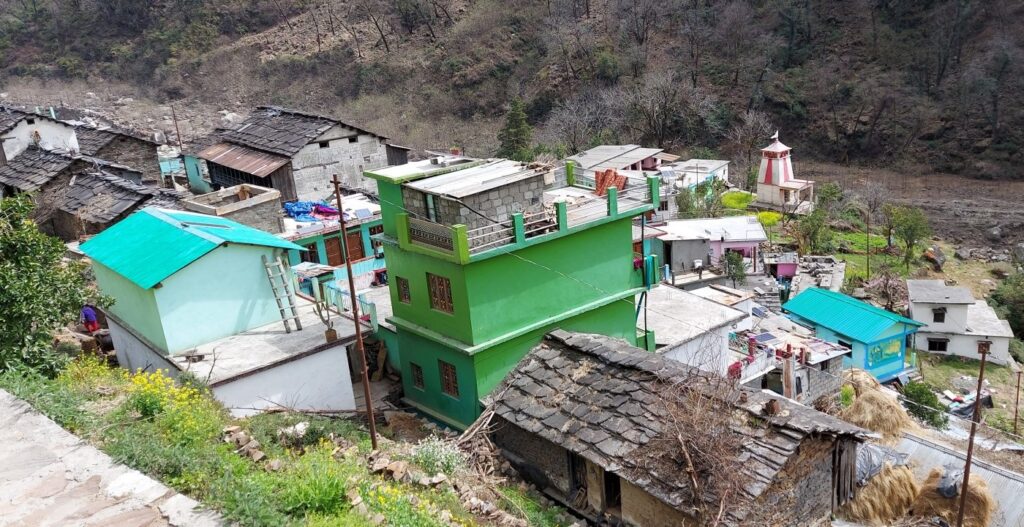
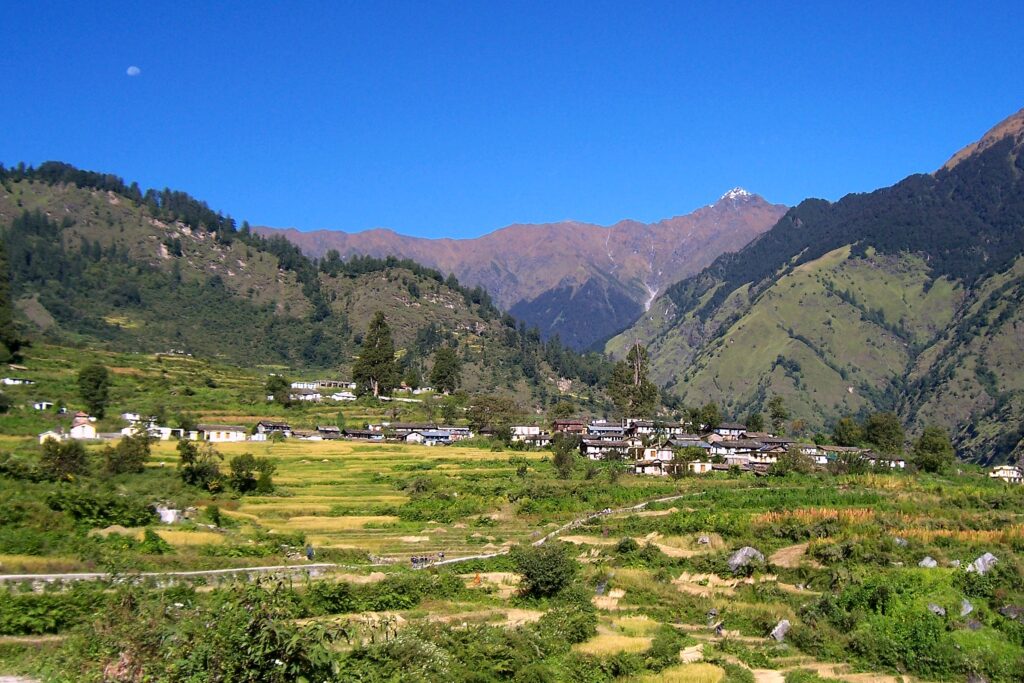
Day 2: Bantoli/Goundar to Kham or Nanu
- Distance: Approx. 7 to 9 km
- Trek Details: The trail from Bantoli begins to ascend more noticeably. You pass through dense rhododendron and oak forests, offering glimpses of the surrounding peaks. The air here starts becoming significantly cooler and crisper. Nanu is a small, quiet village nestled within the forests, providing basic stay options and acting as a midpoint before the final ascent.
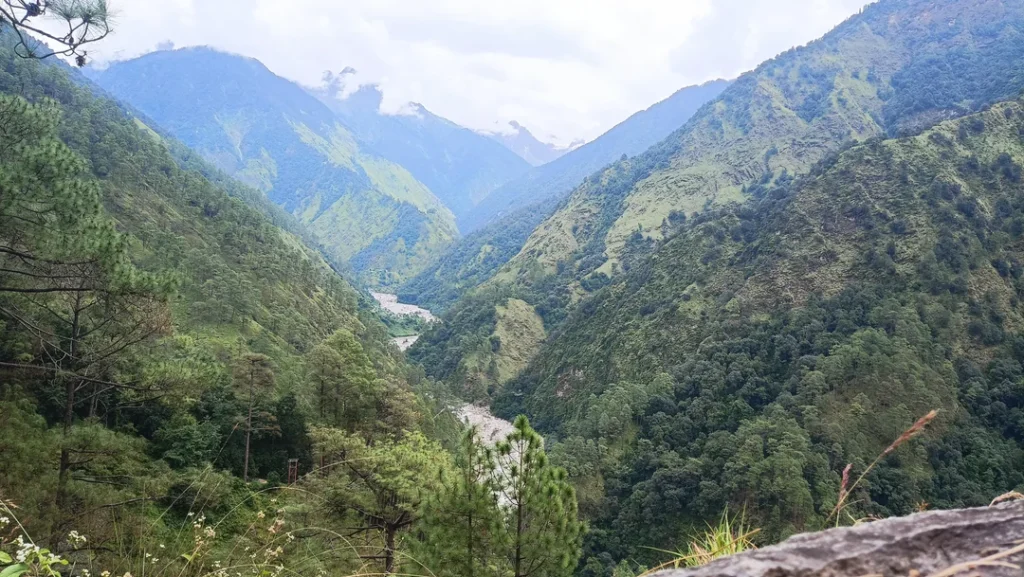
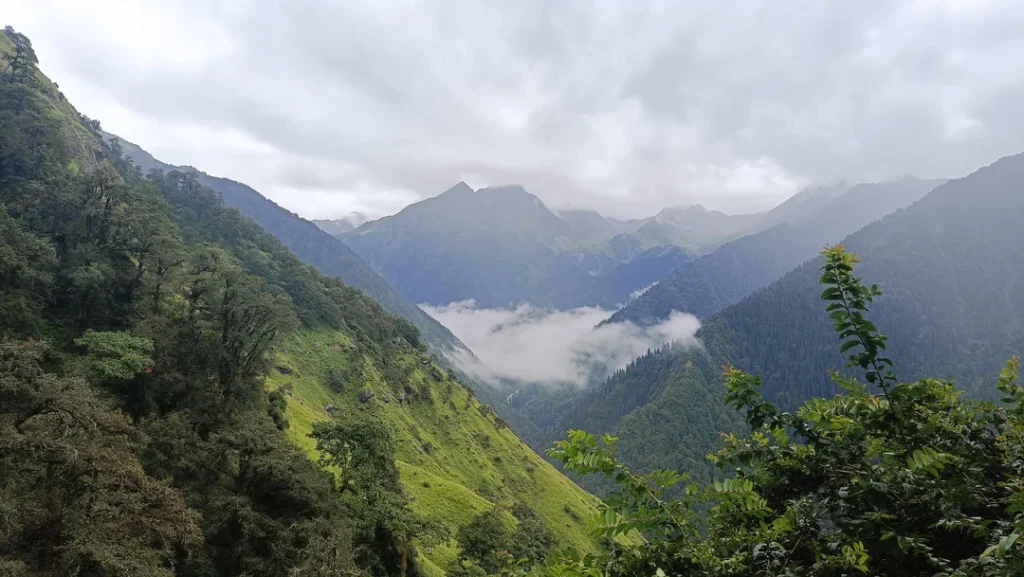
Day 3: Nanu to Madhmaheshwar Temple
- Distance: Approx. 10 km
- Trek Details: This is the longest and most challenging day, involving a significant ascent, especially the last few kilometers. The tree line starts disappearing, replaced by alpine meadows (Bugyals). As you approach the temple, the views open up to reveal the stunning Kedarnath and Chaukhamba massifs.
- The Reward: The majestic stone temple of Madhmaheshwar sits in a secluded, glacial meadow, surrounded by towering, snow-capped peaks. The sheer isolation and silence here are profound.
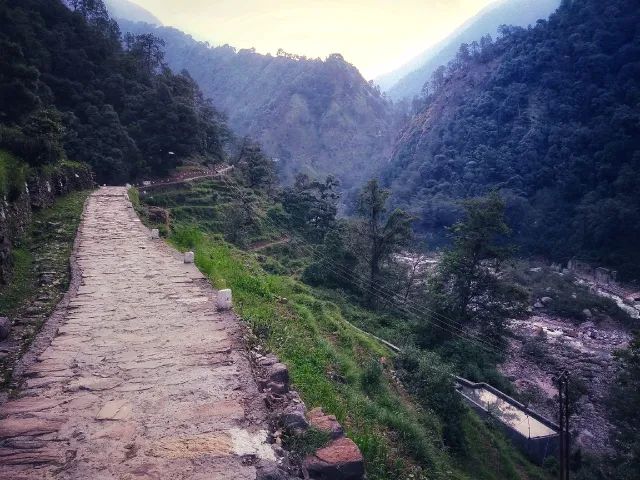
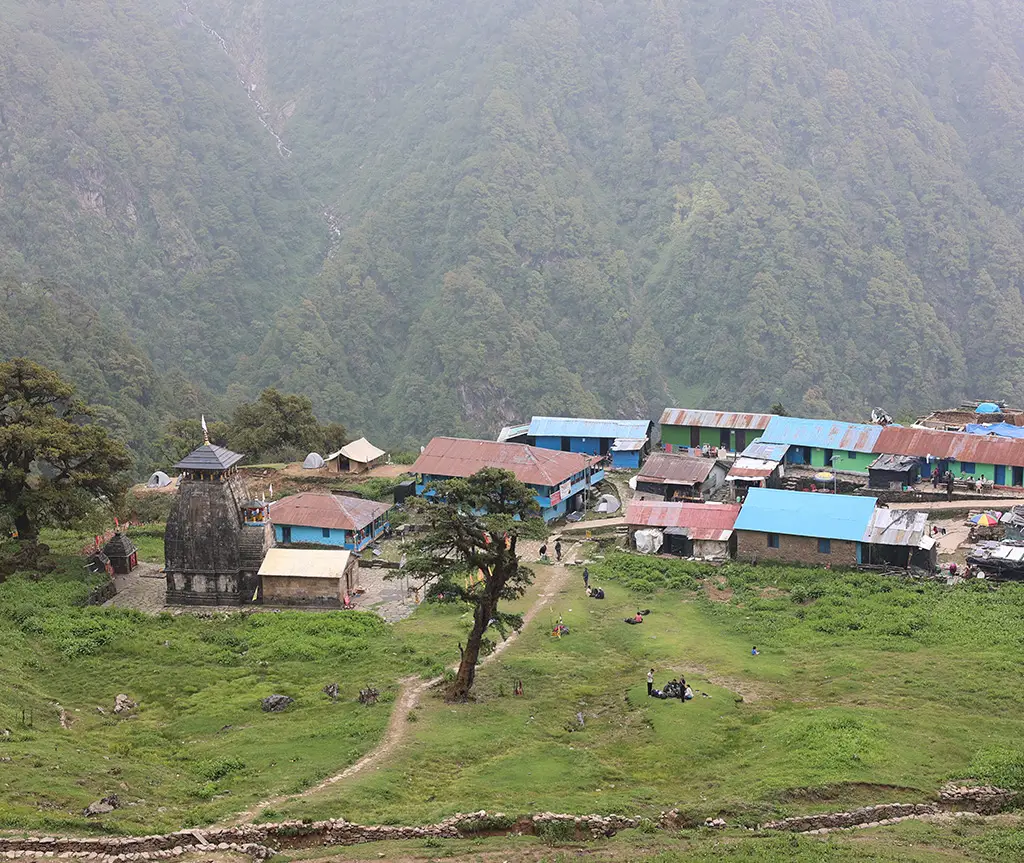
Day 4: Acclimatization and Buda Madhmaheshwar
This day is dedicated to acclimatization, worship, and the ultimate viewpoint.
- Worship: Spend the morning performing puja at the main temple, offering prayers to the navel-shaped lingam.
- Buda Madhmaheshwar (The Ultimate Viewpoint): Located about 2 km above the main temple, Buda Madhmaheshwar (meaning Old Madhmaheshwar) is not a temple but a small, rocky ridge offering the most magnificent, uninterrupted 360-degree view of the great Himalayan range. Peaks visible include Chaukhamba (the main centerpiece), Kedarnath, Neelkanth, Trishul, and Mandani. It is truly the spiritual zenith of the trek.
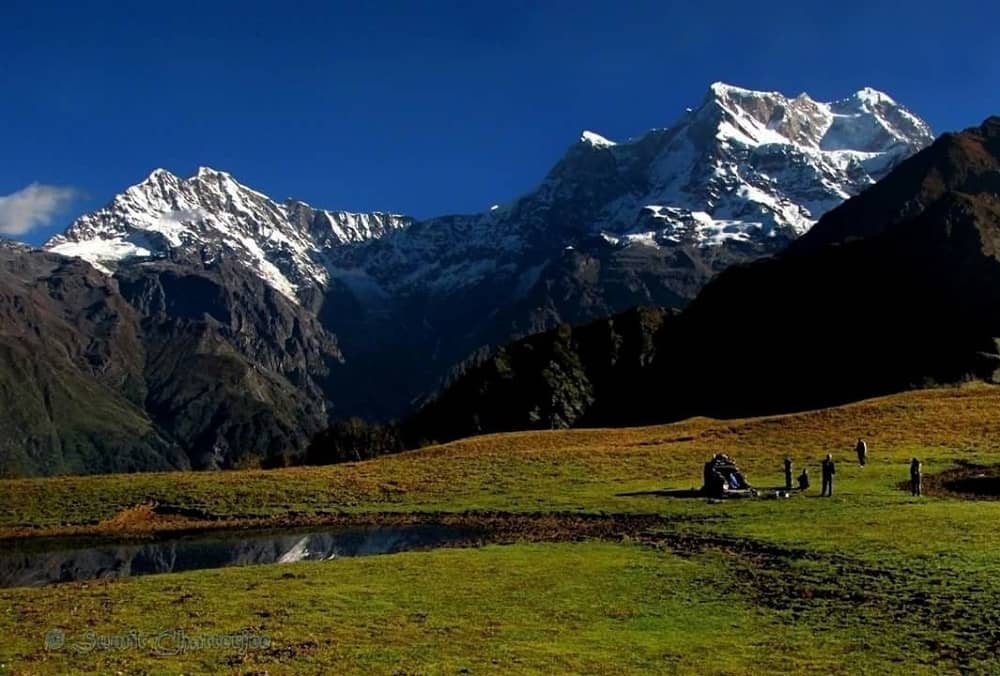
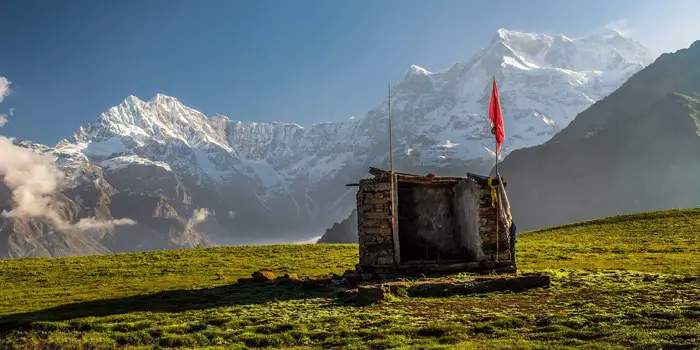
Post-Trek Exploration & Stay Options
Nature Sightseeing and Photography
The Madhmaheshwar valley is a paradise for nature lovers:
- Alpine Meadows (Bugyals): The vast stretches of Kachani Dhar and the meadows surrounding the temple are ideal for nature walks and photography, especially during the post-monsoon season when flowers are in bloom.
- Pristine Jungle: The route from Ransi through Bantoli is famed for its intact, old-growth forests of oak, deodar, and rhododendron. Birdwatching here is exceptional.
- Mandani Valley: An arduous trek further from Madhmaheshwar leads to the remote Mandani Valley, known for its extreme solitude and proximity to glaciers (requires permits and expert guides).
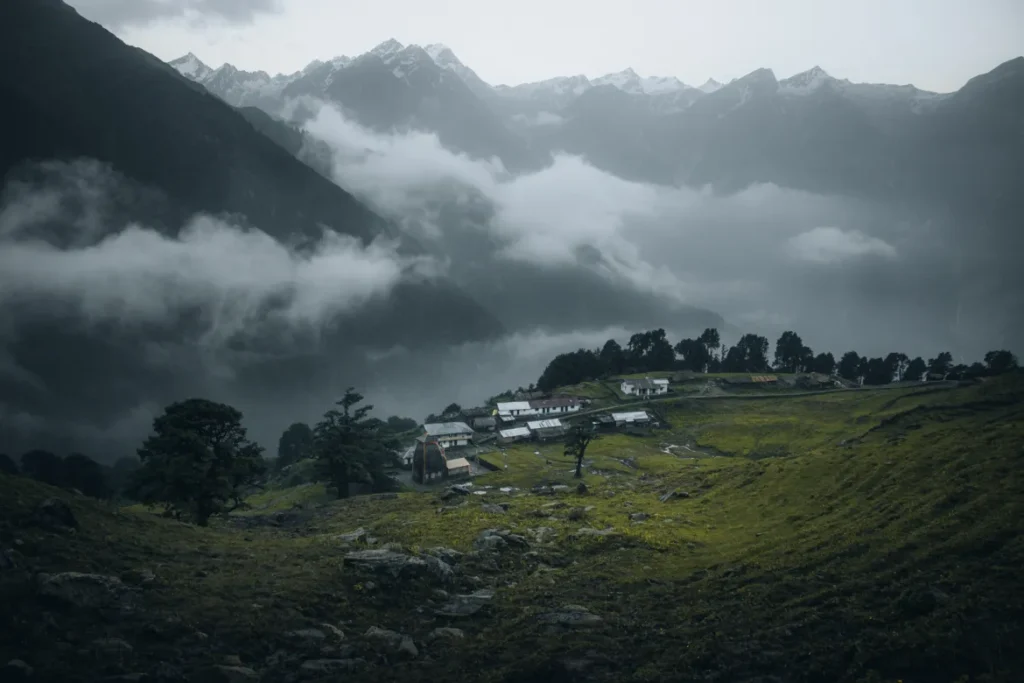

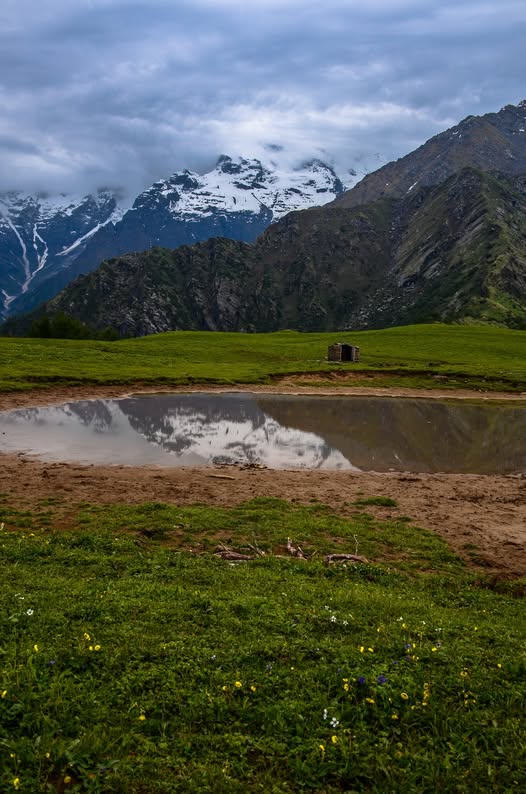
Stay Options (The Madhmaheshwar Trek Circuit)
Accommodation along the Madhmaheshwar trek is rustic and simple, enhancing the traditional pilgrimage experience:
- Ransi & Ukhimath: Offer the most comfortable Homestays and Guesthouses with attached bathrooms and basic amenities, ideal for pre- and post-trek rest.
- Goundar/Bantoli/Nanu: Basic Trekker Huts, Dhabas, and Tent Accommodation. These facilities usually provide sleeping bags, mattresses, and simple Indian meals (rice, dal, vegetables). Electricity and running hot water are rare luxuries here.
- Madhmaheshwar Temple: Accommodation is primarily in Government/Temple Trust Dharmshalas or basic tent setups, suitable for one or two nights.
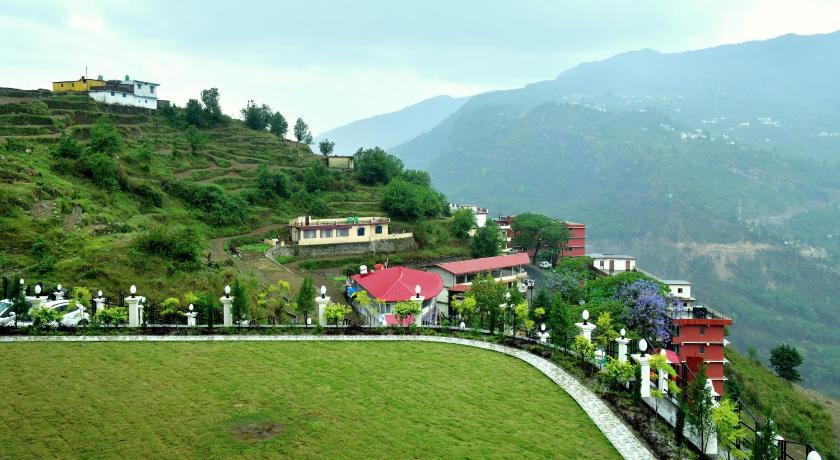
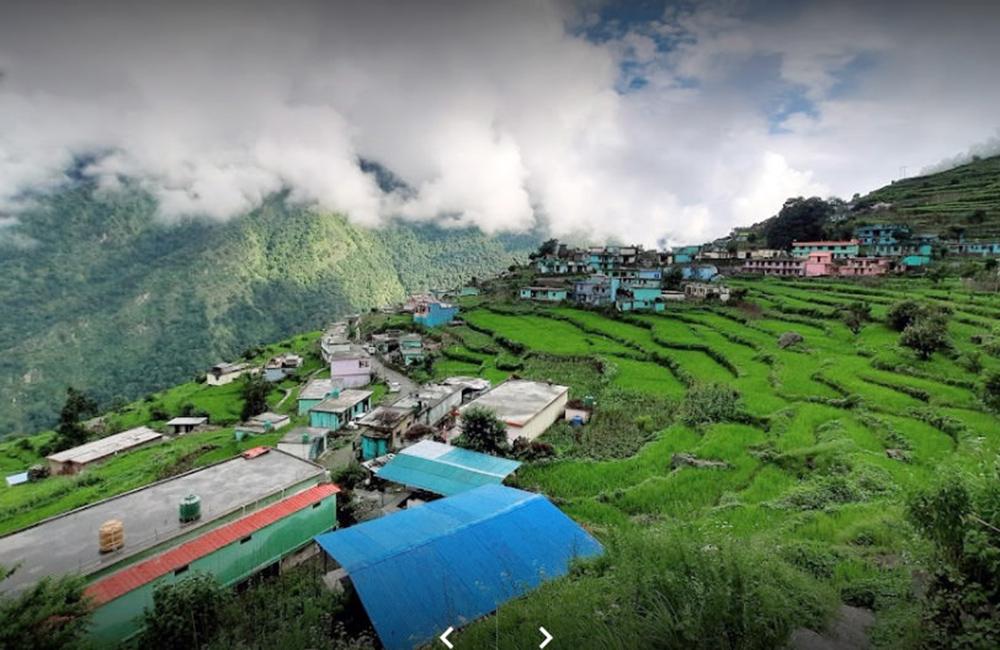
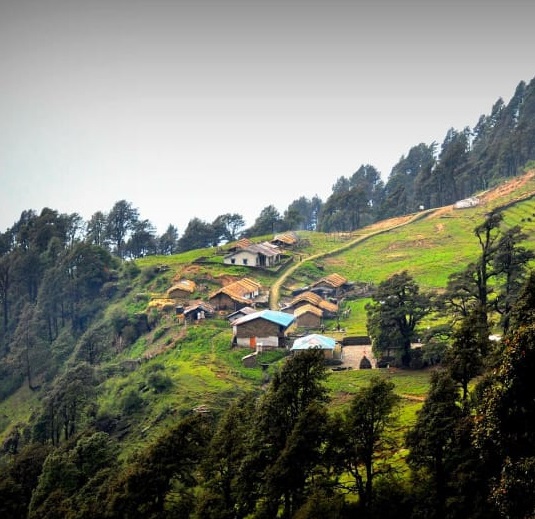
Treks from Madhmaheshwar (The Extended Journey)
For the seasoned trekker and the devout pilgrim, Madhmaheshwar serves as a base for further high-altitude exploration:
1. The Panch Kedar Circuit (The Ultimate Pilgrimage)
Madhmaheshwar is a crucial stop on the rigorous 170 km Panch Kedar trek, which links all five temples. This complete circuit is undertaken by advanced trekkers and can take 12–15 days.
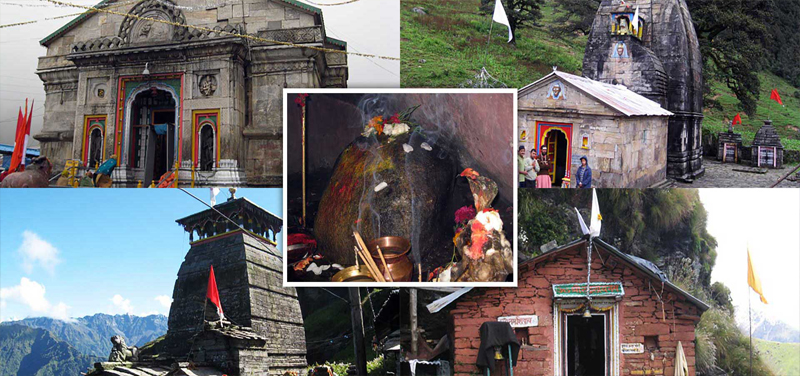
2. Kalimath Temple and Sarag Taal (The Spiritual Detour)
- Route: From Ransi, one can take a detour to Kalimath, one of the most revered Shakti Peethas in Uttarakhand, dedicated to Goddess Kali. This is a shorter, cultural detour before or after the main trek.
- Sarag Taal: A high-altitude lake near the temple, often visited by pilgrims for its quiet, reflective beauty.
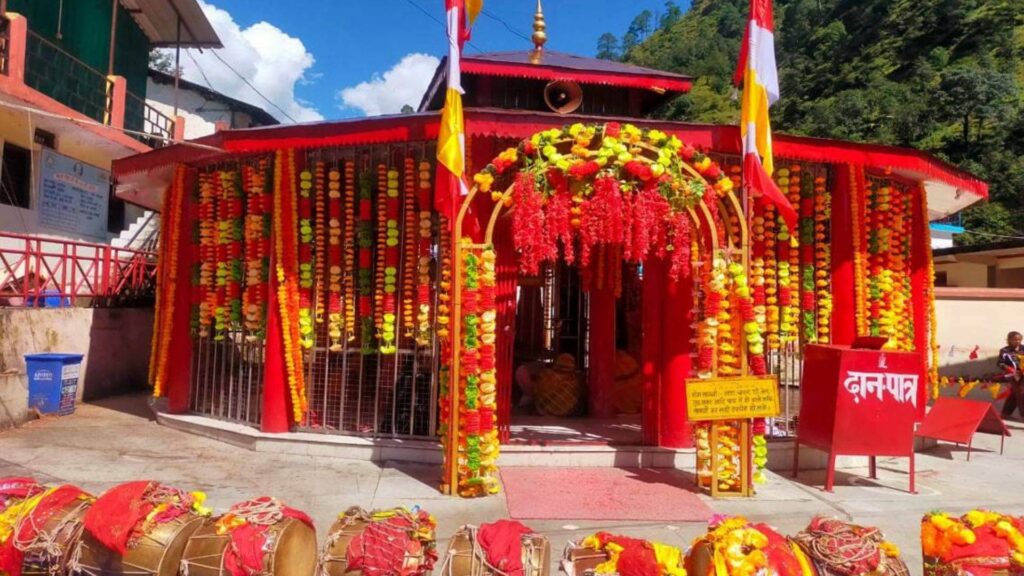
3. Panwali Kantha Trek (The High-Altitude Traverse)
- Route: This advanced trek connects Madhmaheshwar to the Panwali Kantha Bugyal via a challenging high-altitude pass. It offers stunning views, including a section of the Gangotri and Yamunotri ranges, and leads towards Ghuttu or Triyuginarayan.
- Requirement: High fitness level and logistical support due to remote sections and high passes.
The Madhmaheshwar Yatra is not just a trek to a temple; it is a pilgrimage that tests the body and purifies the soul. It offers the modern traveler a rare glimpse into a Himalayan ecosystem that remains pristine, steeped in the mythology of Lord Shiva and the history of the Pandavas’ atonement. It is a journey to the navel of the Lord, seeking balance amidst the tranquility of the high peaks.
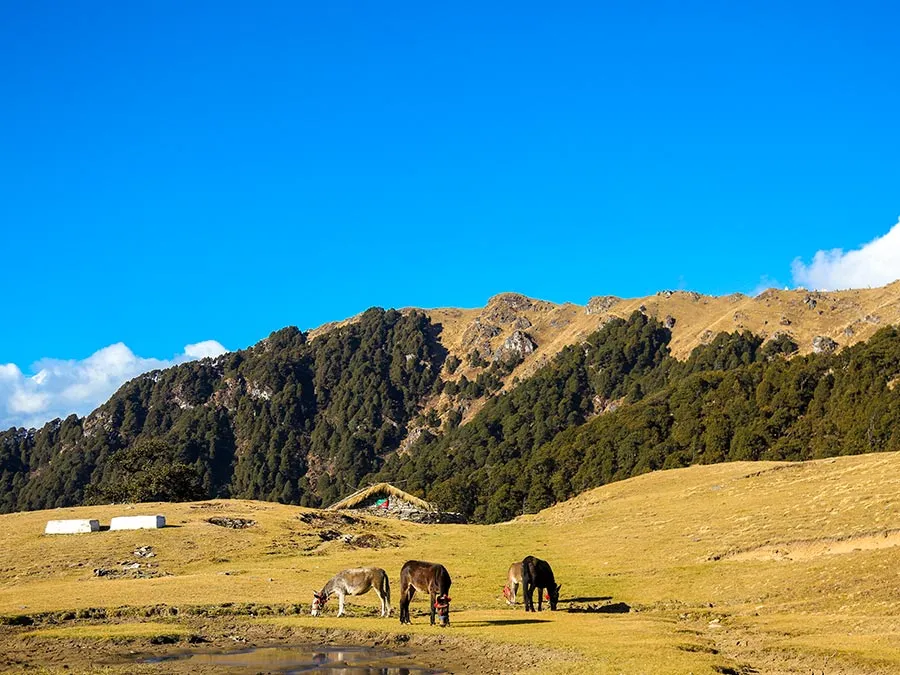
Frequently Asked Questions (FAQ’s)
Where is Madhyamaheshwar Temple located?
It is situated in the Rudraprayag district of Uttarakhand, at an altitude of about 3,490 meters.
How to reach Madhyamaheshwar Temple?
The temple is accessible via a trek from Ukhimath, usually covering 16–18 km through picturesque Himalayan trails.
What is the best time to visit?
May to October is ideal; the temple remains closed during heavy snowfall in winters.
Why is it called Madhyamaheshwar?
The name means “Middle Shiva” because this shrine represents the middle part of Lord Shiva’s body among the Panch Kedar temples.
Is it part of the Panch Kedar Yatra?
Yes, Madhyamaheshwar is one of the five sacred Kedar shrines in Uttarakhand along with Kedarnath, Tungnath, Rudranath, and Kalpeshwar.

